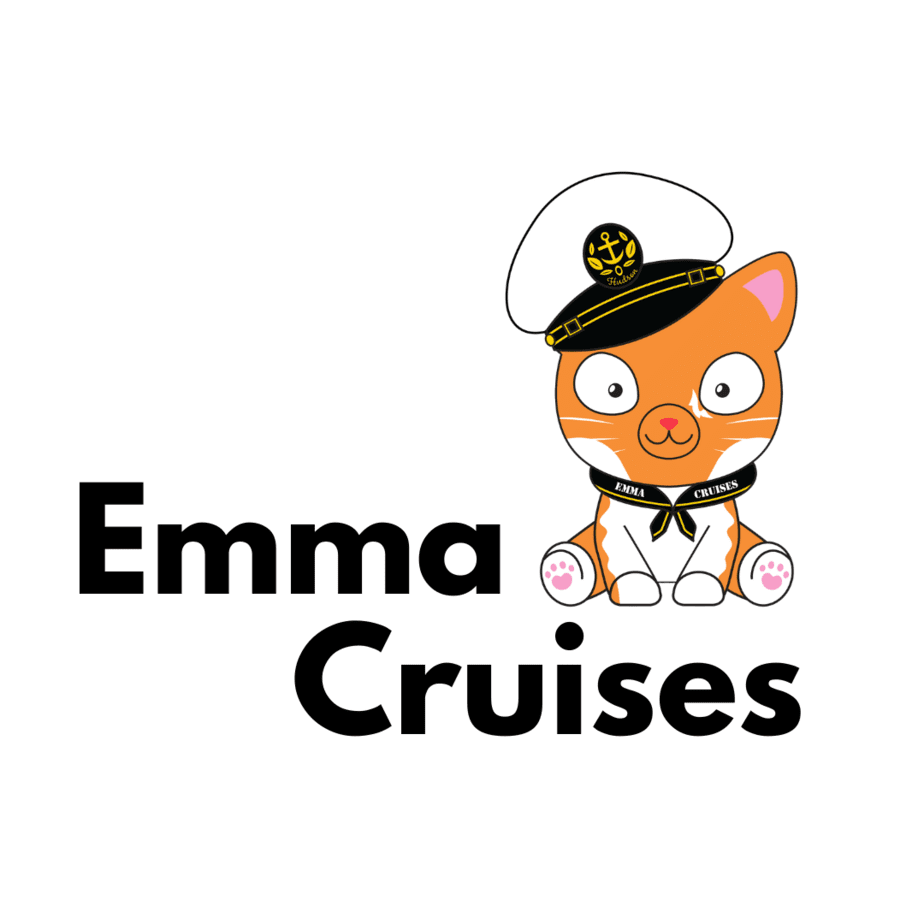Have you ever seen a cruise ship you may be wondering what is below the waterline and how they actually manage to float?
A lot of a ship’s ability to float comes from the way that the ship is designed below the waterline.
Do Cruise Ships Have Flat Bottoms?
The bottom of a cruise ship is not perfectly flat, although it does look flat from a distance.
Under the water, the front of the ship is usually v-shaped or u-shaped, with the back of the ship having a square-like shape.
In this article, we will look at how the bottom of cruise ships are shaped – and why they are shaped like this.
We will also explore why the bottom of cruise ships are different to the bottom of Ocean Liners.
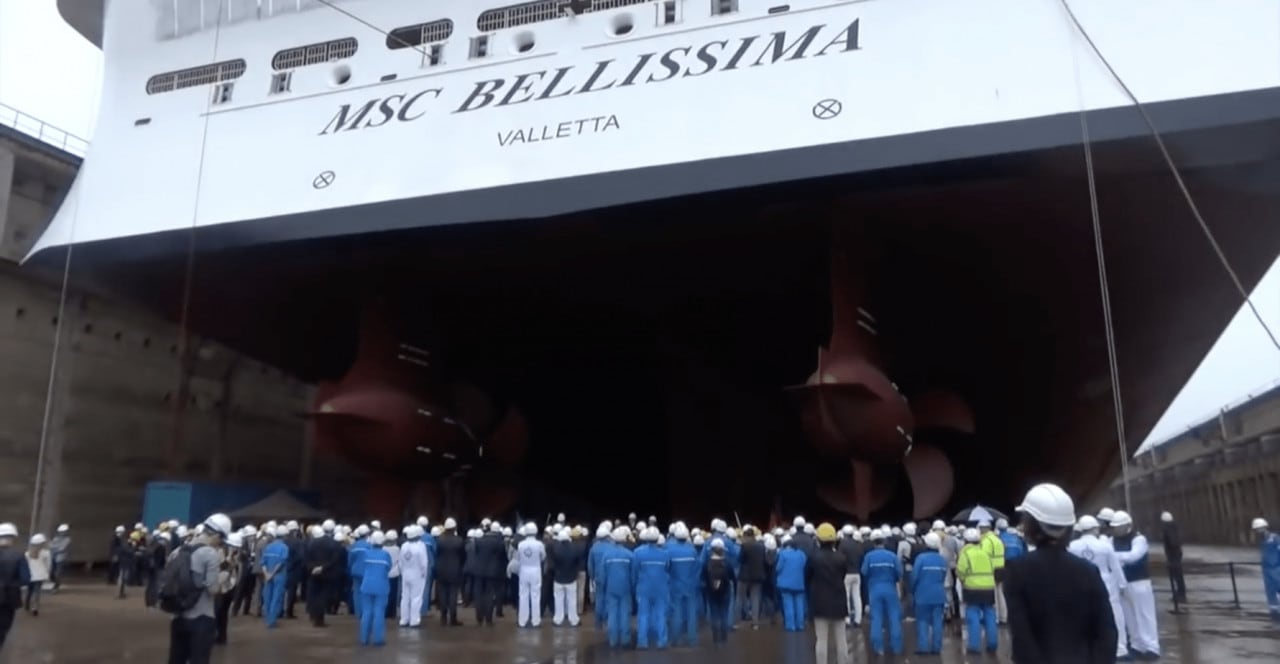
What Shapes Are the Bottoms of Cruise Ships?
If you look at a cruise ship from land, you may think that the bottom of the ship looks flat. Cruise ships often tower high into the sky and do resemble buildings in many cases.
If you were to take the ship out of the water. you’d see that the bottom isn’t perfectly flat.
I’ve been under a cruise ship. I visited the MSC Bellissima when she was being built and we were able to go under the cruise ship before the “Float-out Ceremony” – when the ship sails for the first time.
We were able to explore not only under the ship. but inside the ship too.
It was very surreal being in a ship that was mostly just steel. I’ve always understood the scale of cruise ships having cruised many times in the past, but being UNDER the ship was something different entirely!
Watch the video below to join me as we explore the ship:
How Does the Hull Shape Make a Difference to a Ship?
The hull is the main body of the ship. Hulls come in a variety of different shapes and can be built with different materials, depending on the purpose of the ship.
There are a few different types of hulls, including:
Displacement Hulls
Ships with displacement hulls are designed to move through the water by pushing the water to the sides.
If you were to think about a ship’s hull, this is probably what you think of by default.
When you put a ship into water, it has to displace water in order to be able to float. The amount of water it needs to displace for the ship to be able to float is carefully calculated when designing the ship.
The weight of the water that is displaced weighs the same as the ship according to Archimedes Principle.
If a ship’s hull displaced too much water, it would sink. Too little and the ship would sit too high on the water.
Planing Hulls
Ships with planing hulls are designed to glide across the top of the water.
An example of this would be a speedboat, where the front of the ship comes above the waterline.
Ships with Planing Hulls usually are designed to go faster than ships with Displacement Hulls.
Semi-Displacement Hulls
A ship with a semi-displacement hull, acts like a displacement hull when travelling at slow speeds, pushing water to the sides of the ship.
When the ship gains speed, it is able to act like a Planing hull.
What type of Hull Does a Cruise Ship Have?
Cruise ships have displacement hulls.
Engineers use lightweight but sturdy materials to help achieve the buoyancy needed to keep the ship afloat.
You can see in the photo below that the sides of the ship are built to displace the water as the ship is sailing.
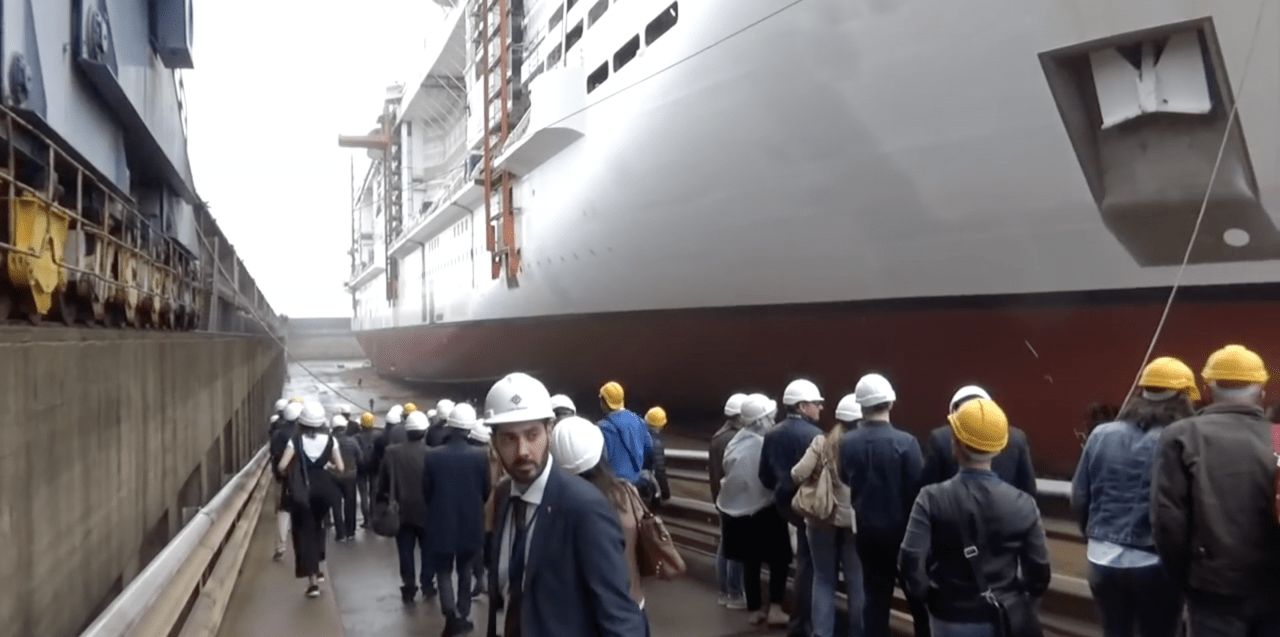
Why Are Cruise Ship Hulls The Shape That They Are?
Elimination of Drag
The rounded edges of the hull help to dissipate the drag or force of the water acting against the ship.
The shape allows the ship to easily travel through the water without too much resistance.
Fluidity and Stability
Ships with Displacement Hulls provide a steadier sailing, than ships with Planing Hulls.
Cruise ships are designed with the onboard experience in mind and being able to keep the ship as stable and steady as possible is very important.
Cruise ships also have stabilisers to help keep the ship as stable as possible for the guests. On the majority of cruise ship sailings, you will not experience any movement of the ship.
To learn more about how much of the movement on a cruise can be felt, check out this post below:
You May Feel Movement on a Cruise Ship – Here’s When and Why
Protection
Most cruise ships are built with a double hull (a hull within a hull) to help prevent damage.
Cruise ships are designed to last for decades and to be able to sail day after day without stopping to take any breaks.
The round bottom shape also helps with further protection from reefs, icebergs, and other damage to the ship.
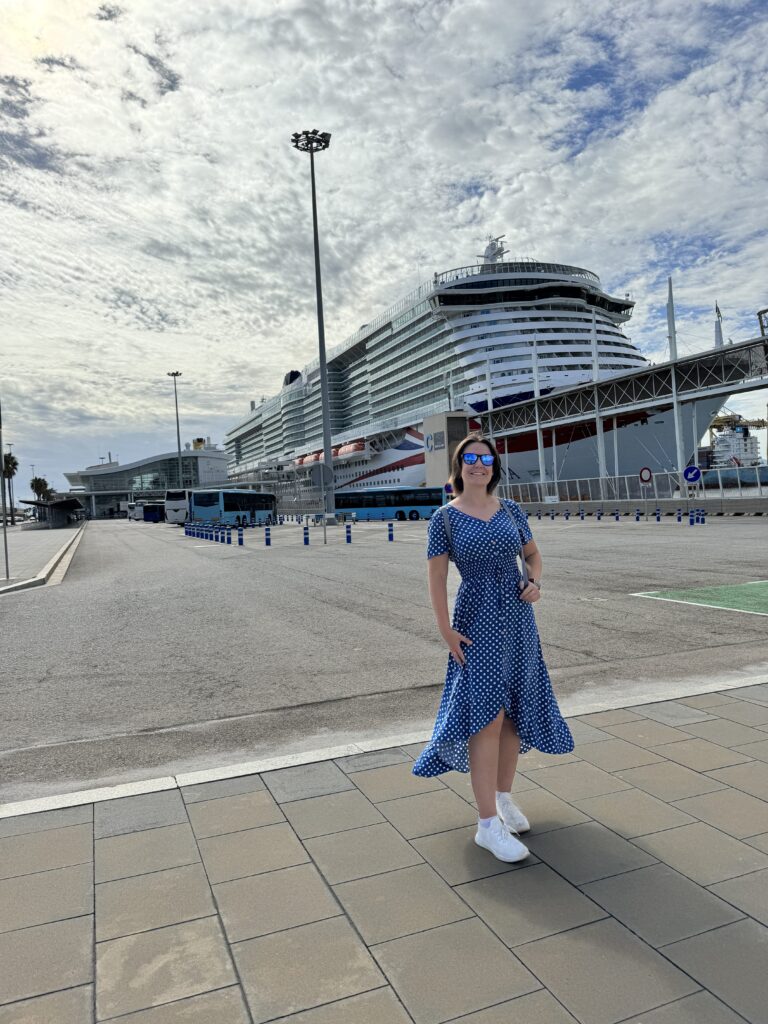
Are There Any Downside to Displacement Hulls?
The drawback of a Displacement Hull is that the ships can’t go as fast as they might with a different hull shape.
That said, cruise ships still sail at around 20 knots, which is almost 25 miles per hour.
The Ocean Liner Queen Mary 2 has a maximum speed of just over 30 knots and a cruising speed of 26 knots. This is faster than a cruise ship.
The speed that a ship can go at is determined by a speed-length-ratio meaning that the length of the ship determines how fast it can realistically travel. The calculation is worked out as below:
Maximum speed (knots) = 1.34 x the square root of the waterline length (in feet) – source.
How Do Cruise Ships Compare to Ocean Liners?
Most people aren’t aware of the difference between cruise ships and Ocean Liners.
They may appear similar but there are significant differences in purpose and design. The design differences affect the hull in multiple ways.
Find out more about the differences in the article below:
Cruise Ships vs Ocean Liners – Measurable Differences You Need to Know
Do Cruise Ships and Ocean Liners Have Different Bottoms?
When Ocean Liners were created, their primary purpose was transportation – to get from point A to point B. Arguably, the most well-known Ocean Liner in history is the Titanic.
There are many important differences in cruise ships and Ocean Liner design.
This affects how the bottom of the ships are built. The chart below gives a basic overlook of the most important differences.
| Shape | Weight | Position in Water | |
| Ocean Liners | Pointed bow | Heavier, thicker, lower in the water | Lower in Water (than Cruise Ships) |
| Cruise Ships | Rounded bottoms | Lighter, sits on top of water | Higher in Water (than Ocean Liners) |
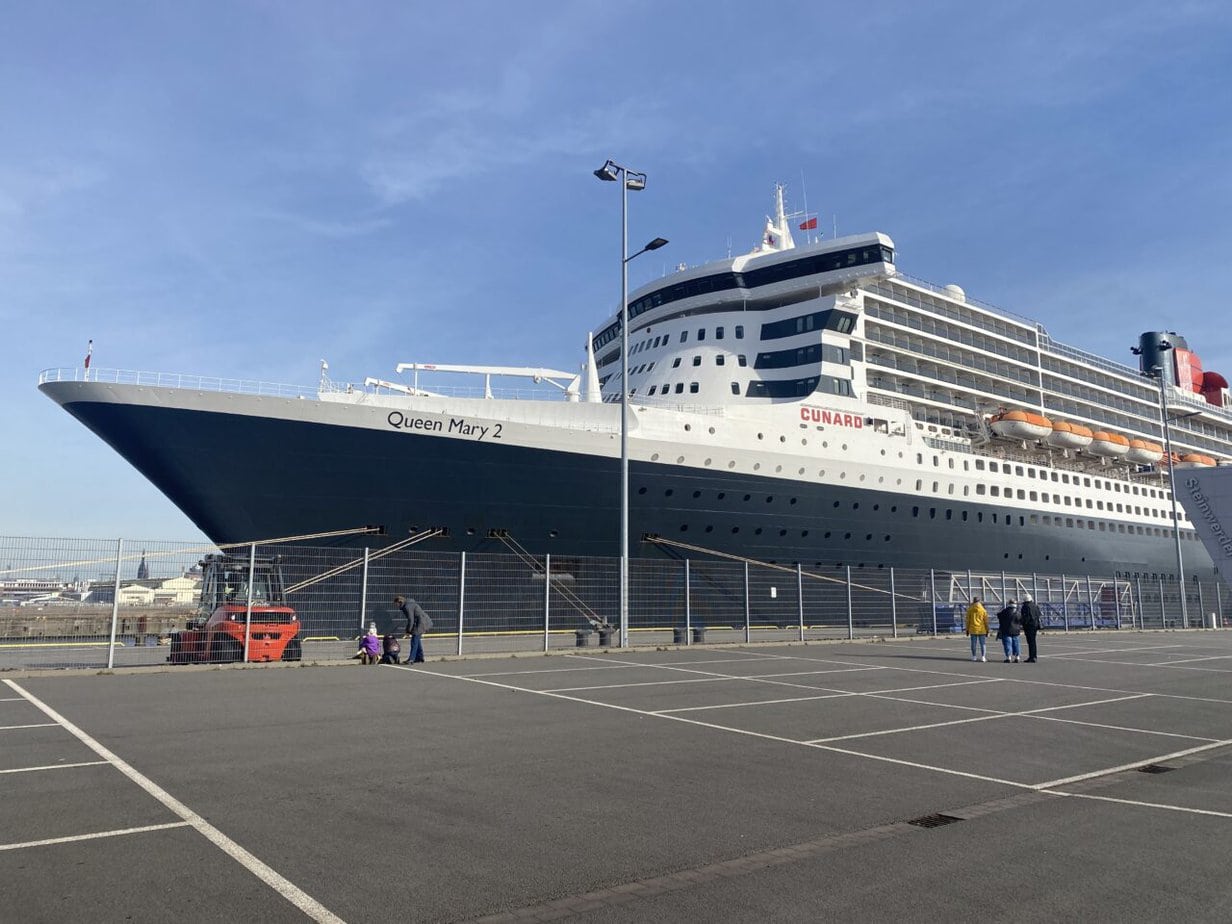
Ocean liners tend to sit quite low in the water and have a pointed bow. They are designed this way to be able to deal with bad weather and to minimize the feeling of movement onboard.
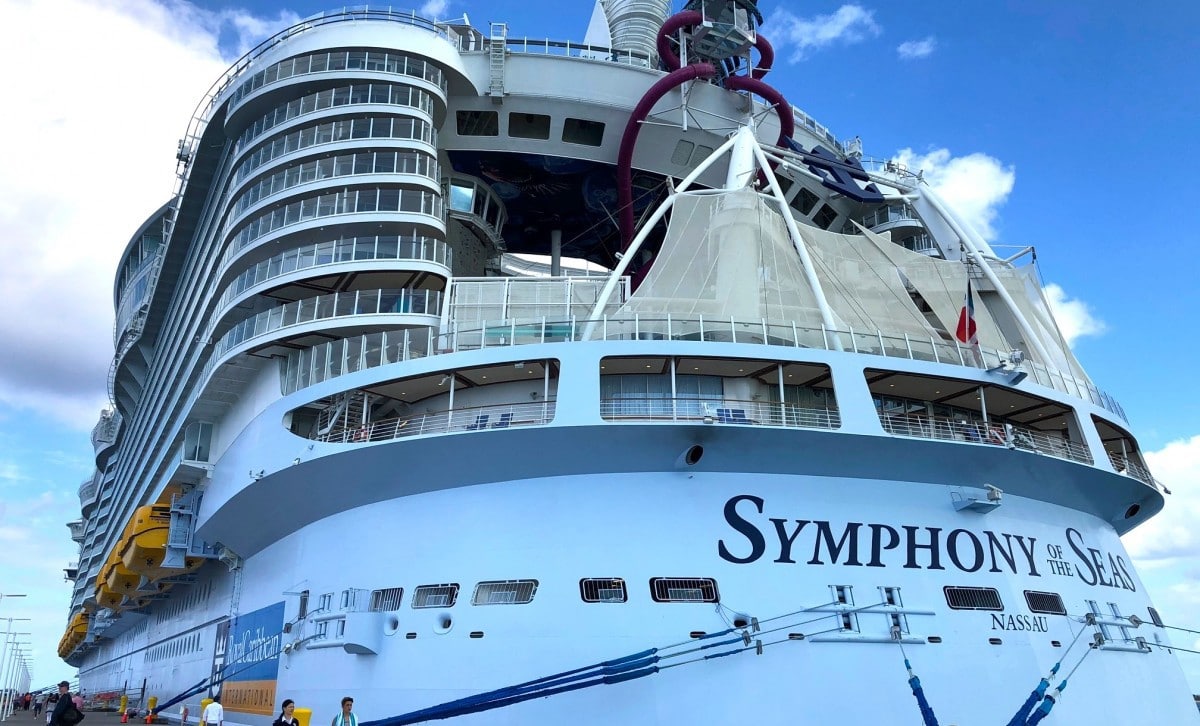
Cruise ships often sit high on the water and can often be strange shapes that aren’t hydrodynamic at all.
Cruise ships aren’t designed to deal with particularly bad weather, although modern ships do have powerful stabilizers.
Most cruise ships will try to avoid stormy weather and may slow down or change their route to do so, Ocean Liners are less likely to have to do this.
Ocean Liners generally have a stronger hull than Cruise Ships. Queen Mary 2 features steel hull plating – ” Thick for rigidity during Atlantic crossings.”
There is only one modernly designed ocean liner currently still in service, and that is the Queen Mary 2 (QM2), which is owned by Cunard.
It was completed in 2003. Cruise ships are still being built in large numbers.
I was lucky enough to sail on the last Ocean Liner, The Queen Mary 2. It was a very different experience to the normal cruises I take.
Find out all about that sailing here:
Before You Go
Find out more about Ocean Liners – including what happens to some when they are taken out of service – below:
Ocean Liners, They Still Exist: Here’s Everything You Need to Know
I stayed in the cheapest cabin when I sailed on the Queen Mary 2. Find out whether I enjoyed the experience here:
I Cruised in The Cheapest Cabin on the World’s LAST Ocean Liner – Queen Mary 2
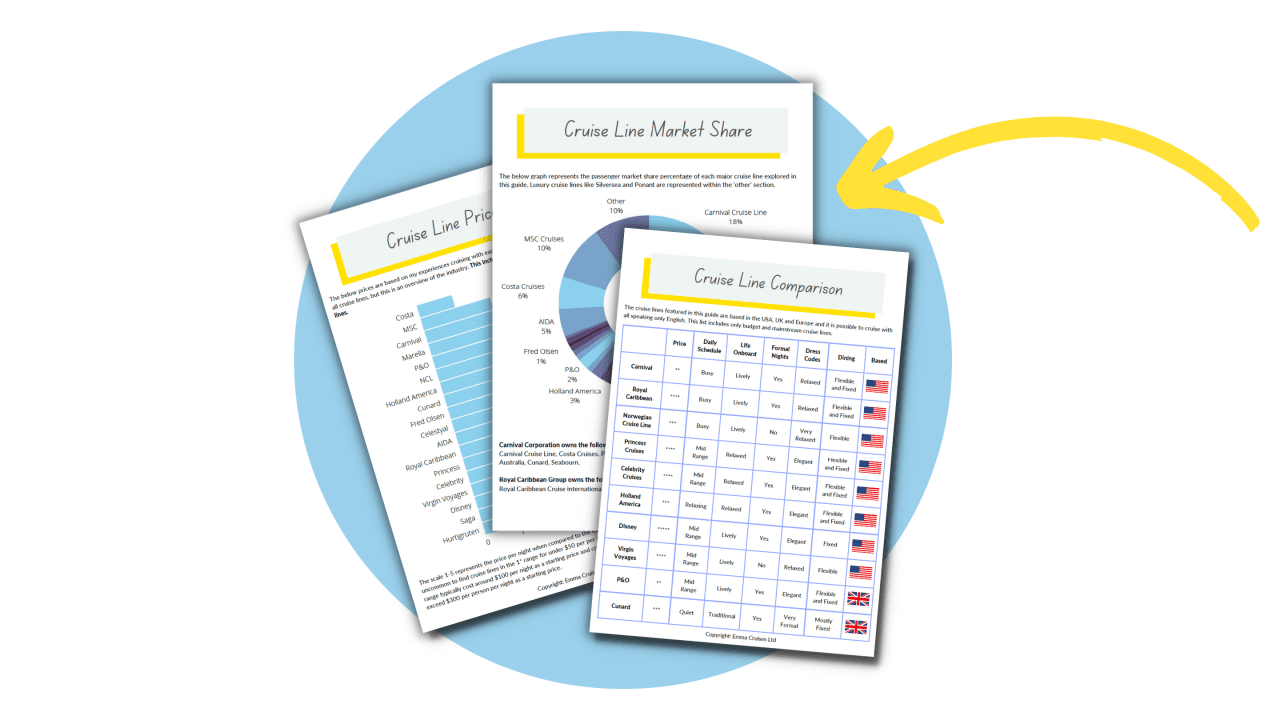
Free Insiders Cruise Line Guide
Ever wondered how the mainstream cruise lines compare? Cruise lines won’t tell you this, but I will.
This FREE guide shows you everything you need to know to find your perfect cruise line.
